
Before the floods, Mazhar Hussain Birhamni dreamed of becoming a scholar. The 22-year-old wanted to pursue a master’s degree in English literature, to comprehend the world beyond the rural village in Pakistan where he lived with his parents.
But his books were washed away this summer amid historic flooding that scientists say was supercharged by climate change. After weeks of relentless rainfall, a nearby levee was breached in August, sending a waist-deep torrent rushing into his house. Birhamni’s family had just a few hours to escape with what little they could carry: pots and pans, small bags of food, a woven bed frame. With one-third of his country underwater and no help in sight, the college graduate’s dreams seemed lost to the deluge.
Low-income nations have long warned that rising temperatures would hit their citizens the hardest, punishing the people who contributed the least to planet-warming emissions and have the fewest resources to cope. Now, as the floods in Pakistan and other recent disasters make the consequences of climate change impossible to ignore, the world is gearing up for a showdown over who should pay the costs.
At the UN climate negotiations in Egypt, Pakistan will lead a bloc of more than 100 developing nations insisting on compensation for the irreversible harms of climate change – a class of impacts collectively known as “loss and damage.” The bloc has called for the creation of a dedicated loss-and-damage fund, which hard-hit countries can rely on for immediate assistance after a disaster, rather than waiting for humanitarian aid or loans that will drive them into debt.
Wealthy countries have historically resisted such calls, fearing liability for the billions of dollars in damage that could be linked to their emissions. But the dramatic escalation in extreme weather, coupled with deep frustration over unfulfilled climate funding promises from the industrialised world, have put pressure on nations like the United States – which has resisted providing compensation – to shift their stance.
There are signs that attitudes may be changing. UN Secretary General António Guterres said on Thursday there is “no more time to postpone” the issue. Egypt will make loss and damage a priority agenda item at the talks. In September, Denmark announced a $13m fund to assist vulnerable countries – the first UN member state to do so.
“With the Pakistan disaster the poster child of climate impacts, there is a change in the political mood, I think,” says Munir Akram, Pakistan’s chief climate negotiator and permanent representative to the United Nations.
“To the developing countries that are suffering these impacts because of the policies of industrialised countries over the past 150 years,” he adds, “this is a matter of climate justice.”
UN climate accords require wealthy countries to provide funds to help developing nations curb their emissions and adapt to a changing climate. But there is no such financial support for vulnerable people to deal with the harm that has already occurred.
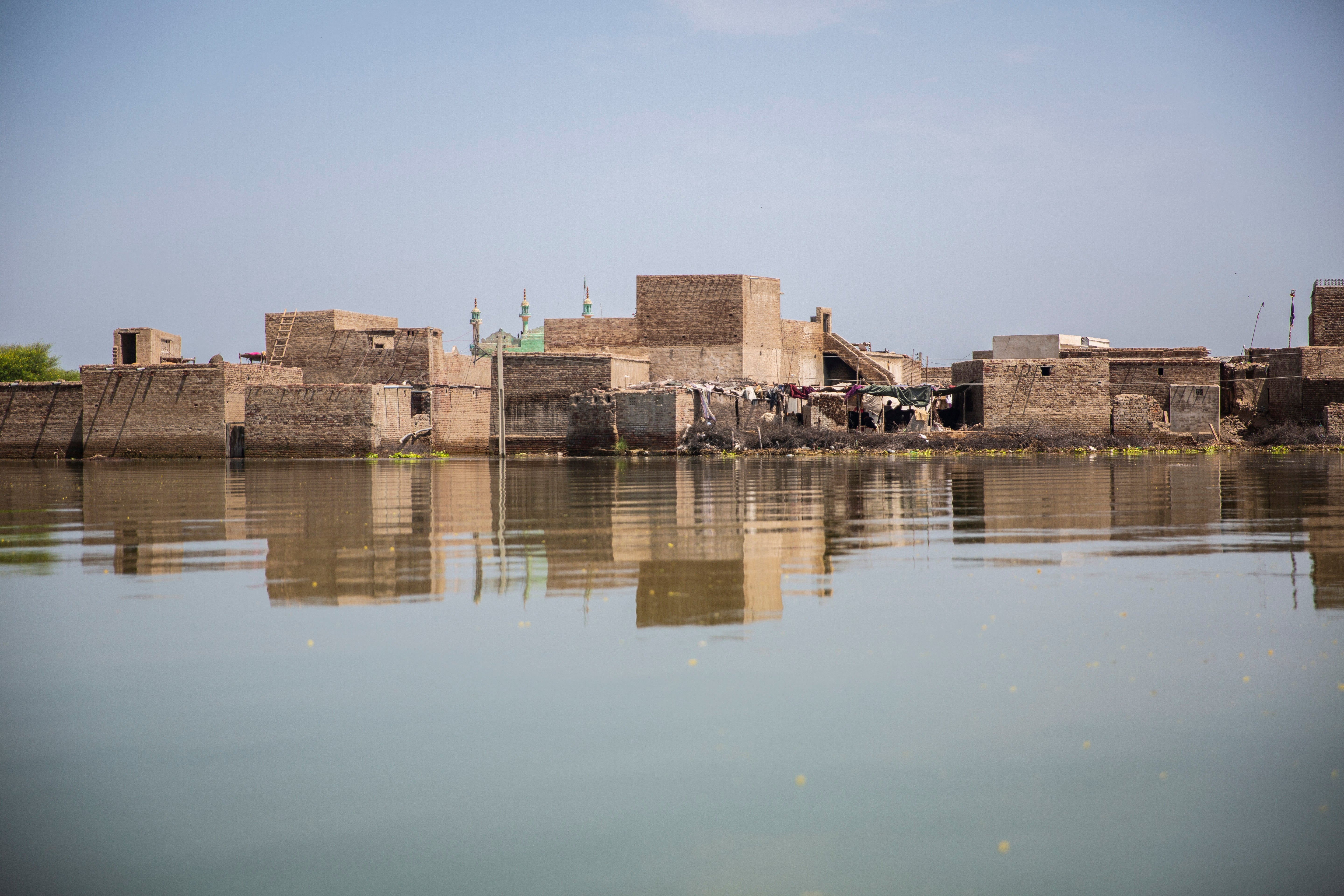
During negotiations over the Paris agreement in 2015, the US demanded that the article on loss and damage specify it “does not involve or provide a basis for any liability or compensation.”
At last year’s talks in Glasgow, a cohort of developing nations that included major emitters like India as well as tiny island states like Vanuatu fought for language that urged their rich counterparts to fund loss and damage. A majority of countries supported it, but that text was ultimately dropped amid opposition from the US and EU.
“There’s a lot of talk about global solidarity and so forth,” Akram says. “But there is this reluctance on the part of the Global North to accept or admit their policies caused this, and therefore they have a responsibility to respond to this.”
About a quarter of all greenhouse gas pollution produced by humans comes from the US, according to data from the Global Carbon Project. More than 80 per cent of planet-warming emissions comes from the world’s 20 largest economies.
By contrast, Pakistan is the source of less than 0.4 per cent of historic carbon pollution.
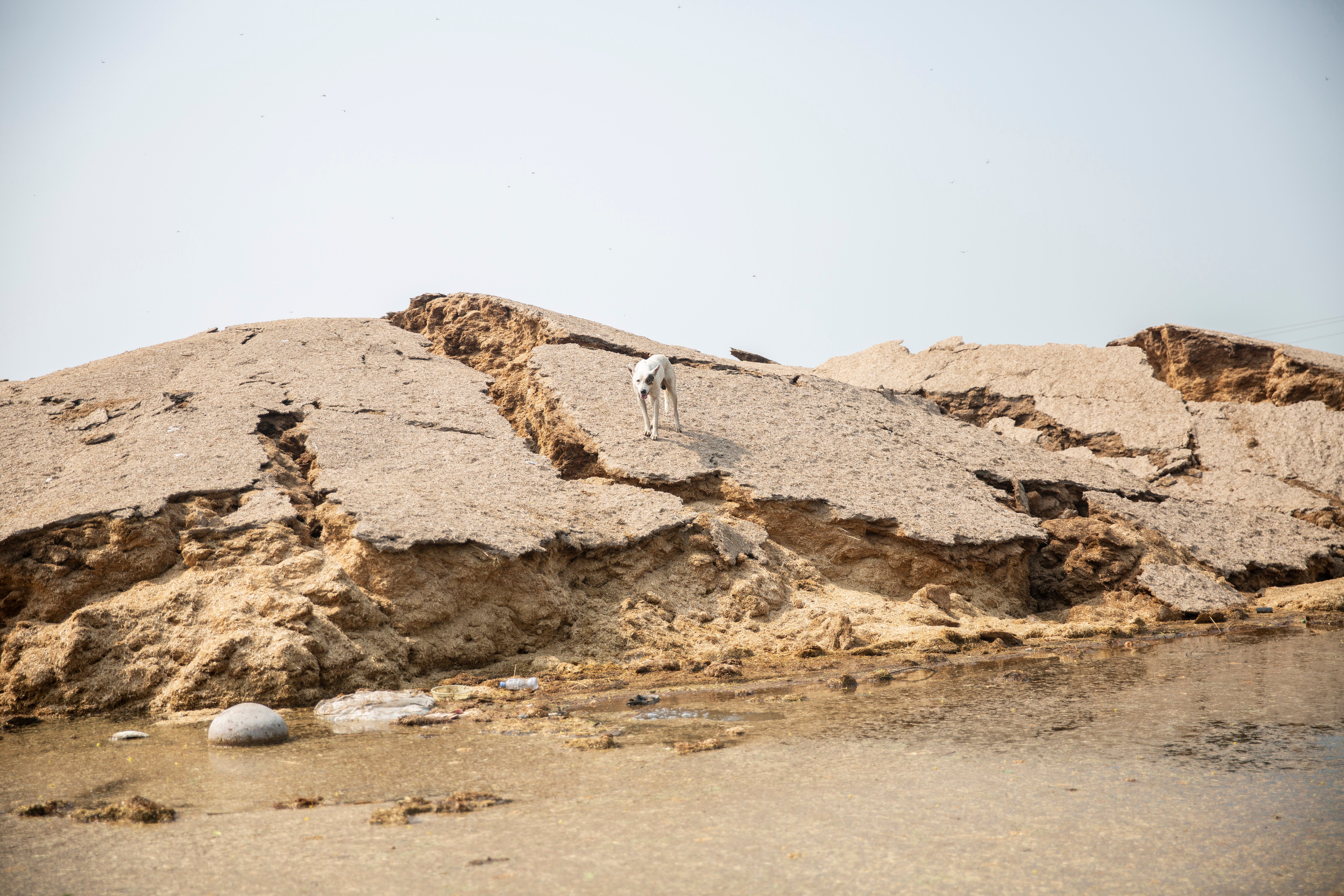
And many Pakistanis have not benefited from the industrialisation that drives greenhouse emissions. A 2021 analysis found that more than half of people in Pakistan are “energy poor” – meaning they lack reliable access to electricity, transport, communications equipment and basic household appliances.
But when blistering heat waves beset South Asia this summer – an event made 30 times more likely by climate change, according to scientists – there were dozens of deaths, huge crop losses and a massive flood from a melting glacier in Pakistan. The country suffered again after record rainfall during the monsoon season caused catastrophic flooding.
At least 1,700 people were killed and 2 million homes were demolished by the floodwaters, according to Pakistan’s National Disaster Management Authority. Roads and bridges were washed away, thousands of schools were damaged and some 7,000 sq miles of farmland were ruined, triggering food shortages.
A scientific analysis of the disaster found the rainfall was made 50 to 75 per cent more intense by human-caused climate change. Pakistan received three times its usual precipitation in August, with the hardest-hit provinces experiencing their wettest months ever recorded, according to the study by the World Weather Attribution network.
Rising temperatures also have been linked to a historic drought in East Africa, which is pushing millions of people to the edge of starvation. Studies blame climate change for this year’s record-setting heat wave in China and deadly storms in Brazil.
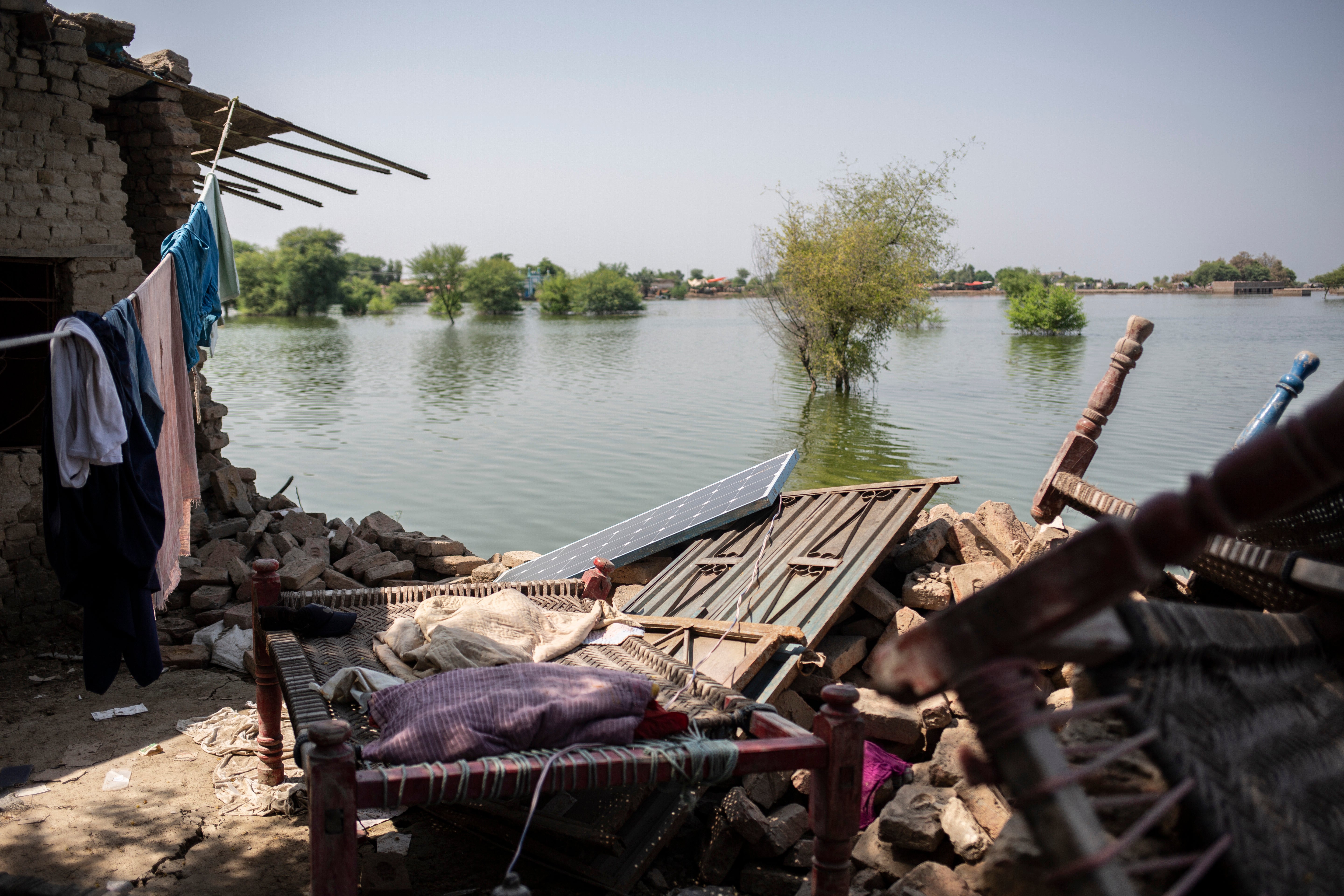
Over the past two decades, there has been an eightfold increase in the amount of humanitarian aid needed to respond to extreme weather – but donations are not keeping up, according to a report from the nonprofit Oxfam. Wealthy countries have also failed to fulfil a decade-old promise to provide $100bn a year in financial support for climate-vulnerable regions.
“It feels totally wrong,” says Birhamni, the young college graduate. “This is a crime we didn’t commit and now we are being punished for it.”
When the floods washed away their village in southern Pakistan, Ali Sher Langah guided his wife and their two children more than a mile through a dangerous torrent to find high ground. Weeks later, they were living in a simple reed hut Langah built outside the city of Moro.
Malaria was spreading through the dozens of families that fled to the area. Venomous snakes slithered out of the floodwaters that still had not drained from the surrounding countryside. Some nights, the families killed as many as 10 of the creatures.
“If you are telling me that other countries are responsible for this, then yes, I feel anger,” the 55-year-old day labourer tells us. “But I know that God is almighty, and I believe this is God testing me.”
Langah’s family is among some 12 million people still in need of shelter and basic household items, according to a UN situation report published last month. Hundreds of thousands of pregnant women lack access to health care, and millions of children have nothing to eat.
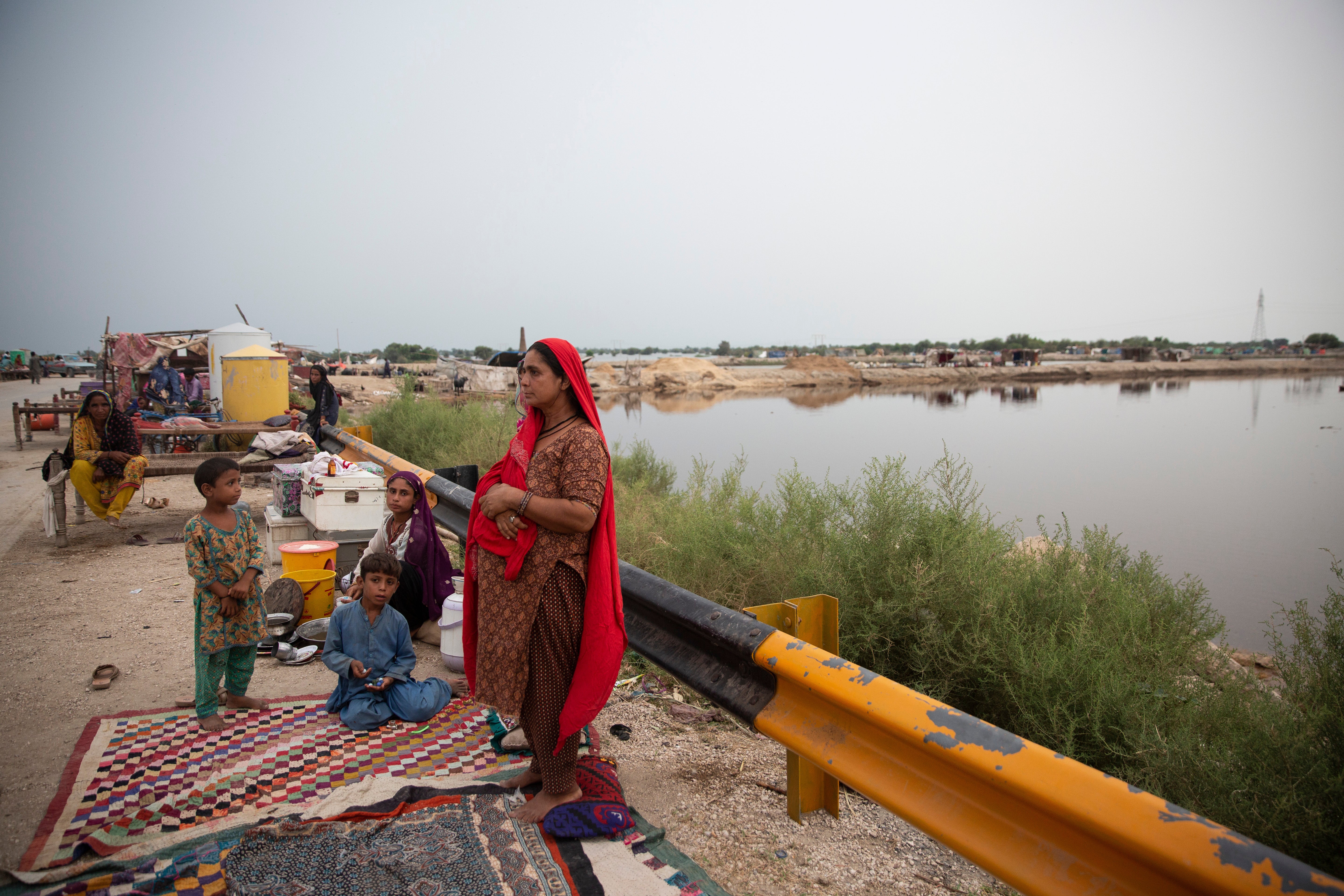
At the same time, Pakistan is grappling with more than $30bn in physical and economic losses from the floods, a World Bank report found. Devastation to agriculture and other industries is expected to shrink the national gross domestic product by more than 2 per cent.
Rebuilding damaged infrastructure in a resilient way will cost the country more than $16bn, the World Bank said – a bill the cash-strapped nation can ill afford to pay.
Experts say the disaster in Pakistan illustrates what happens when the climate crisis collides with long-standing problems of poverty, dysfunction and debt.
The damage from this year’s rain, the World Weather Attribution study found, was exacerbated by Pakistan’s fragile water infrastructure. A government inquiry after a similar flash flood event in 2010 found significant problems with the system of dams and levees along the Indus River, much of which dates back to the colonial era. Although the country was able to construct a flood mitigation wall and improve its early warning system, other recommendations went unheeded, needed upgrades never happened, and reservoirs remained clogged, the study said.
Many residents accused government officials of pocketing funds meant for disaster preparedness. Pakistan is ranked 140th out of 180 countries on Transparency International’s Corruption Perceptions Index.
The countries who suffer from this should have the ability to access financing automatically so they don’t have to go around with their hands out
But Pakistani officials say they have been hamstrung by high levels of debt – much of it linked to a stagnant economy, the Covid pandemic and the cost of recovering from previous disasters. The necessity of paying off past loans meant the government couldn’t invest in forward-looking projects. Agreements with development banks such as the International Monetary Fund have required Pakistan to slash its federal budget and stopped the country from increasing its deficit to meet immediate needs.
“That forced Pakistan to shift funds out of places like the National Disaster Management Authority,” says Malik Amin Aslam Khan, who served as Pakistan’s minister of climate change until this year. “And when disaster struck … that authority did not have the funds to do what it could have done and should have done.”
In high-income nations, over half of monetary losses and damage from climate-related extreme weather are insured, according to a report from the Organisation for Economic Cooperation and Development. Citizens can rely on their governments for help with housing, food and health care after a disaster. Officials will release billions of dollars in recovery money to help communities rebuild.
But Pakistan’s resources were swiftly exhausted by the overwhelming scope of the flood damage, leaving the nation dependent on outside humanitarian aid.
Such donations can be slow and unreliable, says Akram, the Pakistani negotiator. It may take weeks for money from donor countries to make it into the hands of those who need it. And donor fatigue can hamper the flow of funds in years when the world endures numerous disasters.
There is even less funding available to compensate countries dealing with slow-onset disasters that attract fewer headlines: eroding coastlines from rising seas. Declines in fish populations that people rely on for food. The disappearance of cultural sites and sacred landscapes.
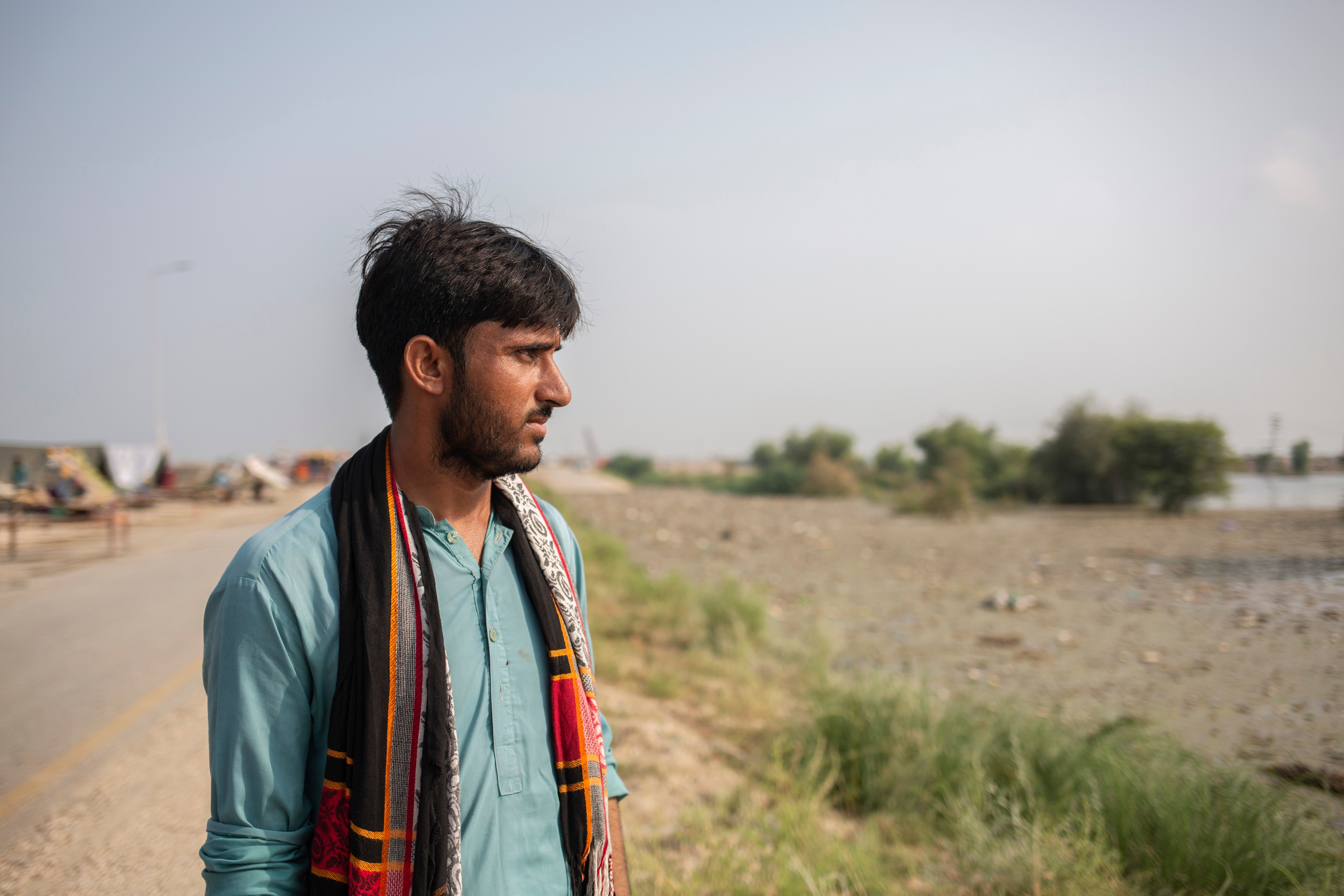
“The countries who suffer from this should have the ability to access financing automatically so they don’t have to go around with their hands out, and depend on the generosity and largesse of richer countries every time,” Akram says.
Had such resources been available after the floods, says Zebunnisa Kolachi, perhaps Pakistan would not be experiencing a secondary public health crisis.
Kolachi, a senior medical officer at a rural health centre in Sindh province, said the long delays in restoring infrastructure and providing shelter and food allowed diseases like malaria to flourish. First-aid kits distributed by the government and aid groups were a bandage on the gaping need. Patchy disease surveillance was making it difficult to stem outbreaks before they spiralled out of control.
Although her office tried to conduct tests and distribute educational materials, there was little way for residents to comply with public health guidance. They could not avoid infections. They had no clean water to drink.
“Now winter has started, and it will further increase the diseases,” Kolachi says. Already, patients were arriving with pneumonia, contracted while living in the open as the weather grew cold.
Touring Pakistan’s flood-ravaged regions in September, Guterres had rarely seen a starker example of climate change’s impact. He has used the tragedy to call for “debt swaps” through which foreign creditors forgive some of developing nations’ loans in exchange for climate investments.
“There is no way anyone can argue there is no loss and no damage,” the UN secretary general said last Thursday. “The world must come together to support developing countries and vulnerable communities.”
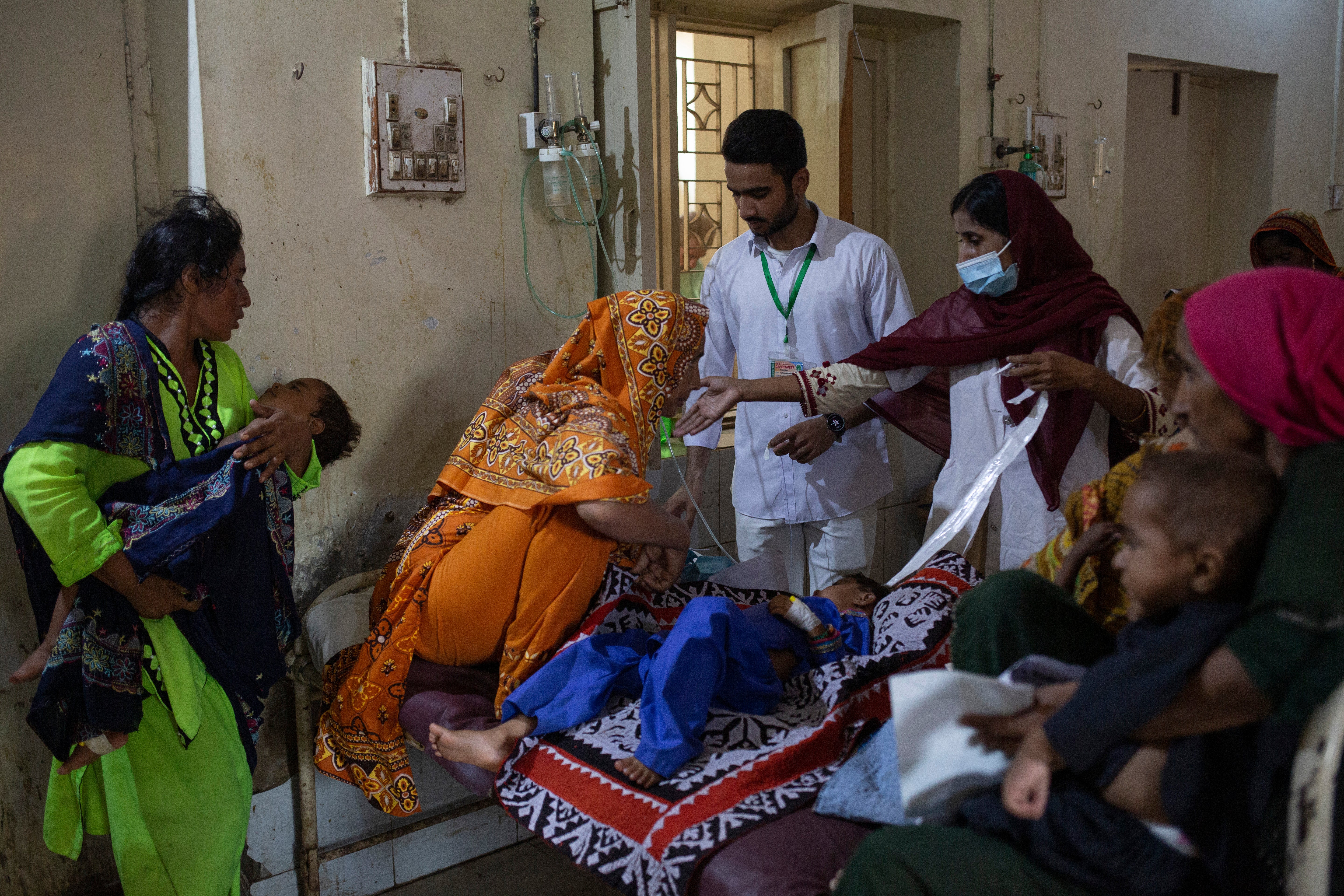
Henry Kokofu, chief of Ghana’s environment agency and lead negotiator for a bloc of countries known as the Climate Vulnerable Forum, says they are “emboldened” heading into the conference.
“This is the result of the consistency and persistency of developing countries,” he says, “and we intend to keep the fire burning.”
The looming question now is how countries like the United States will respond.
US climate envoy John F Kerry has pushed back against the idea that countries like the United States should provide compensation, suggesting in September it was more important to curb emissions and help countries adapt.
But Kerry told reporters last month that the US had a responsibility to help with climate harms. Although rich countries could not accept language that implies legal liability, he said, “we’re totally in favour” of a system that gets money where it’s needed.
Senior Biden administration officials said the United States supports putting loss and damage on the Cop27 agenda and is open to a discussion about funding. But the administration is leery of establishing a finance mechanism, suggesting that money could be funnelled through preexisting programmes.
Brandon Wu, director of policy and campaigns for ActionAid USA, which advocates for loss-and-damage funding, said developing nations want money with no strings attached – not a programme tightly controlled by donor nations. But he hopes Kerry’s remarks are a sign that the loss-and-damage debate might be reaching an “inflexion point.”
“There’s a new level of pressure that the US has not felt before,” he says.
Shaiq Hussain in Islamabad, Pakistan, and Haq Nawaz Khan in Peshawar, Pakistan, contributed to this report.
© The Washington Post







